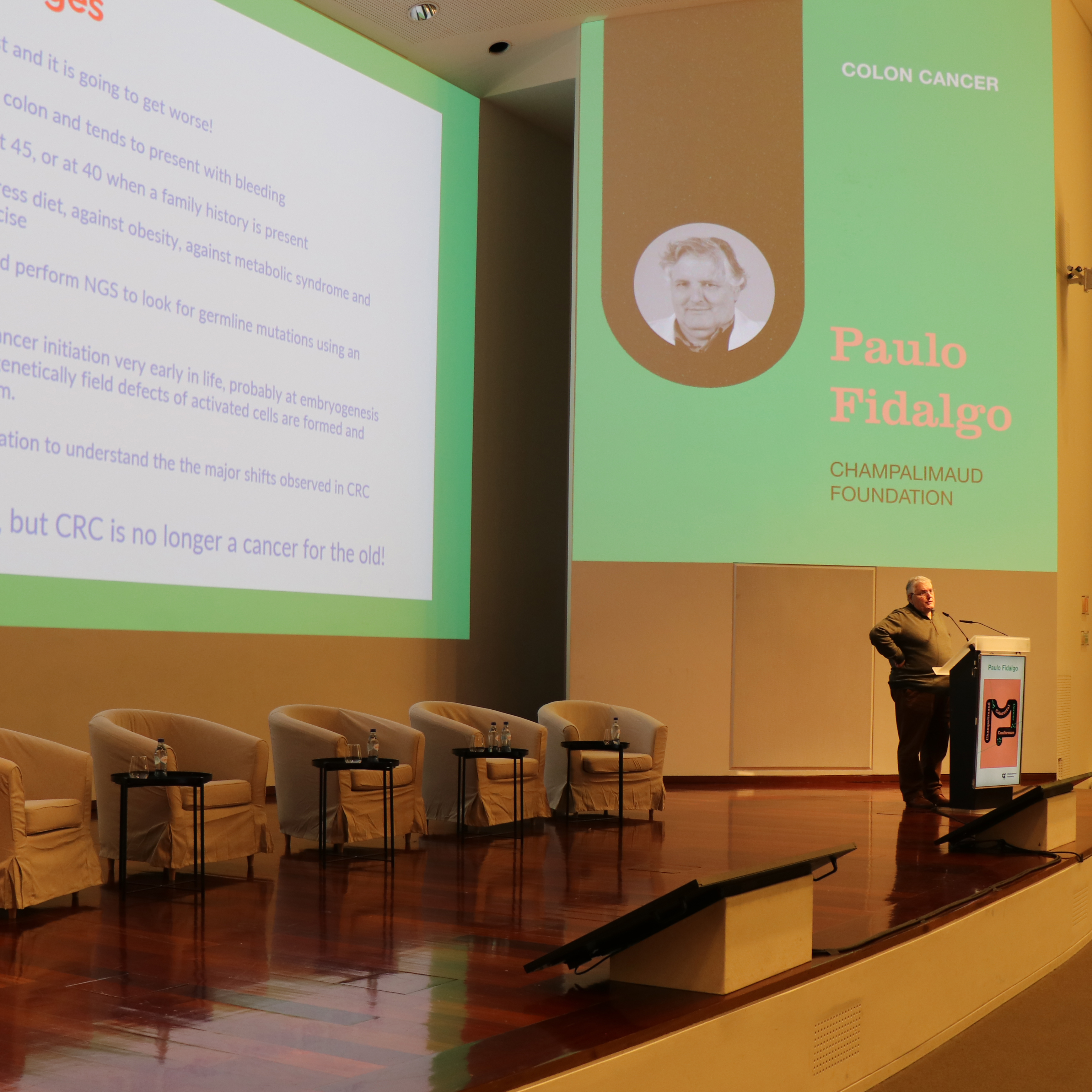The past 10 years have witnessed a doubling of colorectal cancers (CRC) in people under 50 years of age – from 5% to 10% of all cases. Just in the US, between 2008 and 2015, this increase was over 60%!
Contrary to what might be expected, this rise is not a relative one, but indeed a rise in absolute numbers. “This increase is real”, says Paulo Fidalgo, grastroenterologist in the Digestive Unit at the Champalimaud Clinical Centre. More and more people are being diagnosed with early-onset CRC. “Colorectal cancer is not a disease of the elderly”, adds this specialist – and the early-onset incidence is going to continue rising. “In 2030, the prediction is that 25% of patients with colorectal cancer will be under 50”, he warns.
In a previous interview, in 2022, Paulo Fidalgo had already alluded to this phenomenon. Now, in Colorectal Cancer Awareness Month 2023, we decided to ask him further about its causes.
How can such an evolution of the disease’s demographics be explained? In fact, says Fidalgo, nobody knows yet. But according to him, one thing seems certain: the mutations that spontaneously arise in our DNA over generations cannot explain such a rapid increase in early-onset CRC. “It’s a logical impossibility”, he says. Our DNA’s mutation rate is too low.
There are, nonetheless, some potential alternative explanations, although none are likely to explain it all. For instance, the changes in lifestyle in younger people. “Young people today are more exposed to environmental toxins, they are more frequently overweight, and they eat more sugar and processed meats”, says Fidalgo, stressing that, in Portugal, the so-called ‘western diet’ imported from North America (rich in fat and sugars, poor in fruit and vegetables), has gained many fans. This could be partly responsible for the rise in early-onset CRC. “It’s an important factor, but there’s more”, he notes.
Another hypothesis being studied – not directly with respect to CRC, but as a basic scientific question – is what specialists call “epigenetic transgenerational inheritance”. Epigenetic phenomena, caused by our behaviours and by the environment in which we live, do not alter the DNA sequence; they do not induce mutations. What they do instead is to alter the expression (amplifying or decreasing it) of the genes coded in the DNA.
It so happens that the results of this type of research suggest that certain epigenetic changes in parents or grandparents can be inherited by their offspring. If this is true, given that epigenetic change happens much faster than genetic change, it could explain the rapid evolution of CRC incidence in younger people. But not enough is yet known, says Fidalgo, to make such a claim.
For him, there is still another explanation, perhaps a more likely one: that CRC never was a disease of age, but a disease that can start much earlier.
Let’s take this step by step: firstly, as with all other cancers, CRC is a “clonal” disease, which means that it arises from a change in a single cell.
But cancer is not made in a day. And for an intestinal polyp to become a malignant tumour, “two to four major events [of cellular transformation or differentiation] must occur”, says Fidalgo. In other words, when CRC appears in a 30 year old, it arises from cellular transformations that began in that person’s childhood or even embryonic life.
During embryonic life, Fidalgo explains, there is a phase in which cellular division explodes – especially that of stem cells, which are the cells that will give rise to every tissue in the body. “It’s like an unzipping of digital files”, he says. “And around the fourth week of the embryo’s development, subtle genetic divergence events (due to a mutation) can take place within cells of the large intestine’s inner wall”. At the end of the organism’s development, whole segments of the gut will thus have become divergent from neighbouring segments – and decades later, be prone to cancerisation.
A clue in favour of this hypothesis of embryonic cellular divergence is that, as Fidalgo further points out, intestinal polyps – the pre-cancerous lesions that can lead to CRC – all tend to be concentrated in the same location. “Neoplasias and polyps rarely affect different parts of the colon at the same time”, he stresses. “We published a study in which we suggest that whole segments of the intestines are ‘primed’ to form neoplasias” as a result of a cellular divergence that occurred in the past.
Why was the trend not apparent before? Perhaps, Fidalgo replies, because doctors have always tended to downplay the complaints of younger people, attributing rectal bleeding to the presence of haemorrhoids, for instance. This delays the diagnosis of a CRC.
Another explanation could be that, due to our less than healthy lifestyle (eating habits, sedentarism, etc.) the situation has become more acute than in the past.
What can be done to detect CRC earlier? For now, says Fidalgo, it may help to lower the age of the first screening for this cancer – from the usual 50 to 45 years of age. According to him, this can be done, in Portugal, within the current framework of national screening policies.
In the future, Fidalgo expects that intestinal cellular divergence biomarkers will be identified, which will allow doctors to know which people have to be monitored for CRC. Ideally, those biomarkers should be detectable in blood samples (“liquid biopsies”) – drawing blood is a much less invasive procedure than a colonoscopy.
As if to remind us of the urgency of the situation, on the second day of the aforementioned congress, participants were able to watch, on a big screen, a live rectal cancer surgery performed on a patient who was just… 22 years old.
Text by Ana Gerschenfeld, Health & Science Writer of the Champalimaud Foundation

